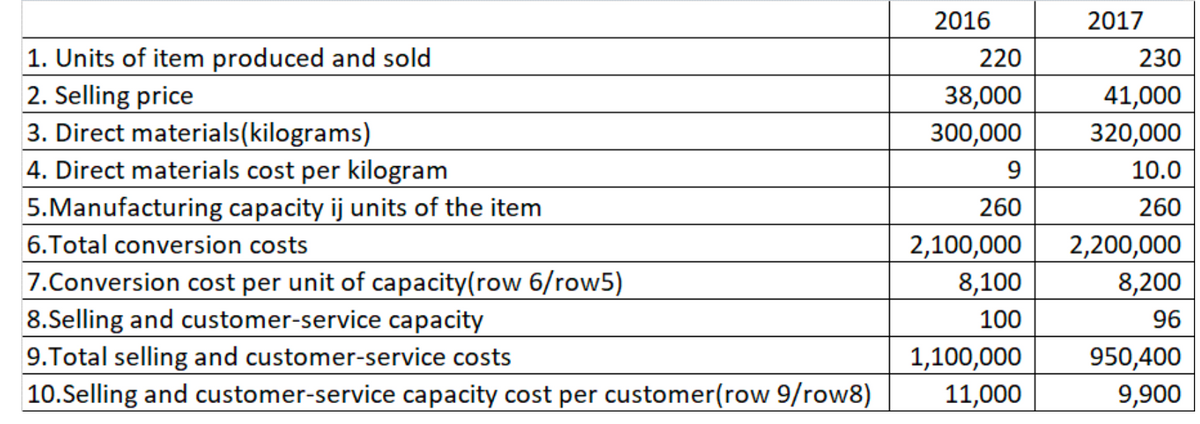Berlin Corp. makes a special-purpose machine called HTW used in the textile industry. Berlin Corp. has designed the HTW machine for 2017 to be distinct from its competitors. It has been generally regarded as a superior machine. Berlin Corp. presents the following data for 2016 and 2017.)(see picture) Berlin Corp. produces no defective machines, but it wants to reduce direct materials usage per HTW machine in 2017. Conversion costs in each year depend on production capacity defined in terms of HTW units that can be produced, not the actual units produced. Selling and customer- service costs depend on the number of customers that Berlin Corp. can support, not the actual number of customers it serves. Berlin Corp. has 75 customers in 2016 and 80 customers in 2017. 2(a). Calculate the growth component from 2016 to 2017 2(b). Calculate the price-recovery component from 2016 to 2017 2(c). Calculate the growth productivity component from 2016 to 2017
Berlin Corp. makes a special-purpose machine called HTW used in the textile industry. Berlin Corp. has designed the HTW machine for 2017 to be distinct from its competitors. It has been generally regarded as a superior machine. Berlin Corp. presents the following data for 2016 and 2017.)(see picture)
Berlin Corp. produces no defective machines, but it wants to reduce direct materials usage per HTW machine in 2017. Conversion costs in each year depend on production capacity defined in terms of HTW units that can be produced, not the actual units produced. Selling and customer- service costs depend on the number of customers that Berlin Corp. can support, not the actual number of customers it serves. Berlin Corp. has 75 customers in 2016 and 80 customers in 2017.
2(a). Calculate the growth component from 2016 to 2017
2(b). Calculate the price-recovery component from 2016 to 2017
2(c). Calculate the growth productivity component from 2016 to 2017

Step by step
Solved in 4 steps with 2 images


